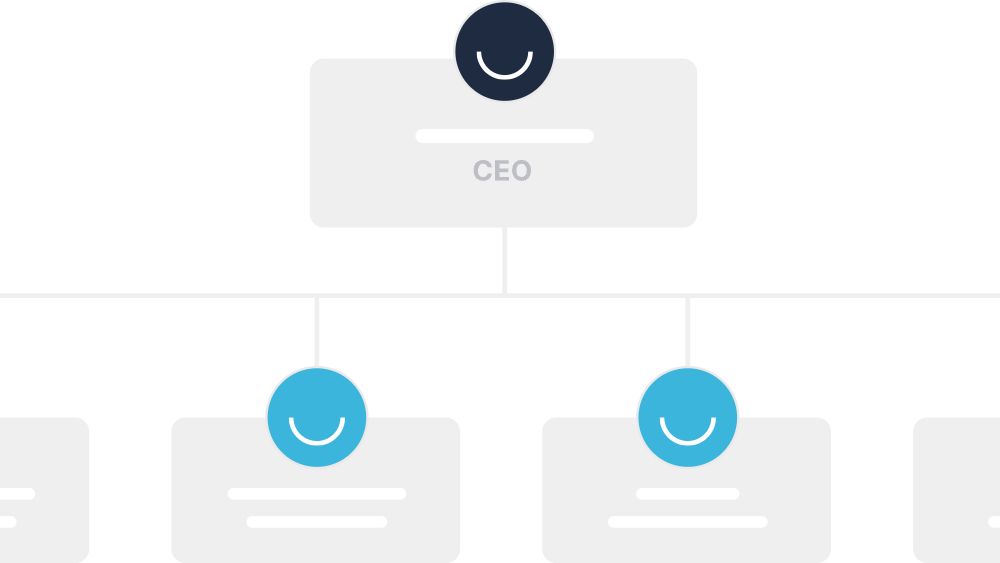- Iterate
- Organizational Structure
- What Are Flat Organizational Structures, and How Do They Work?
What Are Flat Organizational Structures, and How Do They Work?
Table of contents
We’re diving into flat organization structures: the good, the bad and what we can learn from them.

Every organization has its own structure specific to the qualities of that organization. Some are hierarchical, while others are flat.
Whether it's for building your own company or choosing the right work environment for yourself, learning about organizational structures can be useful for understanding how the right organization and management can foster a successful team and a killer product, and clarify where you sit in all of it.
There are many types of ways to structure an organization, and in this guide we will go in depth on one commonly used in startups: flat organizational structures.
What is an organizational structure?
An organizational structure is a system that conveys the way roles, responsibilities and hierarchy are delegated within an organization.
There are ten different types of organizational structures, but the three most common in the workplace are hierarchical, matrix and flat. A hierarchical structure is the traditional model and what you are probably most familiar with: It looks like a pyramid. It usually has the CEO at the top, and multiple levels of management underneath. The matrix is less common and features a model in which teams report to multiple leaders. To learn more about the hierarchical and matrix organizational structures, visit this article.
What is a flat organizational structure?
Like it sounds, a flat (or horizontal) organizational structure refers to an organization that has fewer levels to its reporting structure. It eliminates the need for middle management and instead opts for a structure in which everyone on the team contributes equally and works cross-functionally.
When working with fewer layers of management, the responsibilities of the middle manager are shared between the executives and the individual contributors.
While some companies following a horizontal structure may still have some form of leadership and teams, other organizations take equality to the next level and choose to have no seniority, managers, executives or even job titles, allowing and expecting employees to work wherever is needed.
How does a flat organizational structure function?
A common misconception of the flat organizational structure is that without levels of management, there will be anarchy, confusion and chaos. However, there is often still a hierarchy — just a much flatter one. Traditionally, flat organizations will still have senior team managers who oversee a wider span of the team, are closer to the lower levels of staffing and provide direction, support and decision making.
In the case where there is no middle management at all, some organizations develop self-managing teams. These are teams who have the liberty to organize their own work and come up with methods for how they will achieve their goals.
Real world examples of flat organizations
One of the most popular examples of a successful horizontal structure is Valve, an American video game development company valued at more than $10 billion. As the BBC reported, Valve prides itself on being an organization “where everyone is equal and managers don’t exist…where employees sit where they want, choose what to work on and decide each other’s pay.”
So how does Valve do it? The company follows an “open allocation” plan, meaning it allows team members to work on whatever projects they are interested in and lets them switch teams whenever they like. Valve even fashioned all of its desks with wheels to encourage literal internal mobility. Additionally, Valve instills non-permanent team leaders for each project which enables groups to have some form of management authority without creating an indefinite hierarchy.
In the interest of transparency, Valve made its employee handbook public in 2013. It immediately sparked curiosity and controversy in other organizations, but there are still many people who can't wrap their heads around a structureless corporation.
Another example of a horizontal company is New York startup Squarespace, now valued at $7.4 billion. Although it has since added more levels of management, in 2017 Squarespace described its structure and culture as flat, open and creative. Like Valve, Squarespace encourages its employees to work on projects they are passionate about and allows them to move around as needed within their team. Squarespace attributes its success in managing a manager-less company to effective communication.
The benefits of flattening an organization
While everyone may not want to go to the extremes that Valve has to create a bossless environment, we can still learn from the advantages of flattening an organization. Here are a few:
Increased speed and productivity. Think of a flat organization like a soccer game. You have players sprawled out in all areas of the field with different responsibilities, but they all have one focus: the goal. No role is more important than another, and you certainly don't have one player assigned to a group telling them what to do and when to do it the entire game. Everyone manages themselves and focuses on what they can contribute to achieve the objective of the greater team. When you eliminate extra layers of management you get to the goal faster.
Improved communication. Due to the limited bureaucracy a flat organization inherently provides, employees are empowered to work more closely together despite seniority and across departments. This leads to more open lines of communication.
More empowered leaders. Taking out the middleman not only grants employees the autonomy to own projects as they see fit — it also encourages independence and allocates more responsibility. Micromanagers are helpful to ensure work remains on track, but in the end they do not merit much room for growth.
Greater transparency. With clearer communication comes greater transparency. When everyone is self-governing, it is necessary for all employees to be operating with the same information. At The Org, we are passionate about making the workplace more transparent, and that's why we also encourage cross-functional communication, autonomy and the wearing of multiple hats.
Who flat organizational structures work best for
While there are many upsides to flat organizations, they are not for everyone. One downside to flat structures is that they are much harder to maintain in large organizations. Horizontal structures are most often used by and appear to work best for small companies and early-stage startups who need less people management and more hands on deck. When the number of employees no longer becomes easily manageable, it can be difficult to support, organize and control the company.
Another disadvantage to flat structures is the lack of traditional growth and career trajectories. If you are someone whose career goals include steady promotions and team leadership experience, then this likely isn't the environment where you would feel motivated.
Additionally, while a flat structure may sound like a dream for someone who is excited by the possibility of joining any project that interests them, many find the lack of clarity in roles and responsibility to be challenging. Some argue that undefined roles foster generalists rather than specialists, and that there can be confusion about who is responsible for what.
In other words, if you’re the founder of a small company, someone who prefers working as an individual contributor or even if you just fancy yourself an egalitarian, then the flat organizational structure might be for you.
In this article


The ORG helps
you hire great
candidates
Free to use – try today